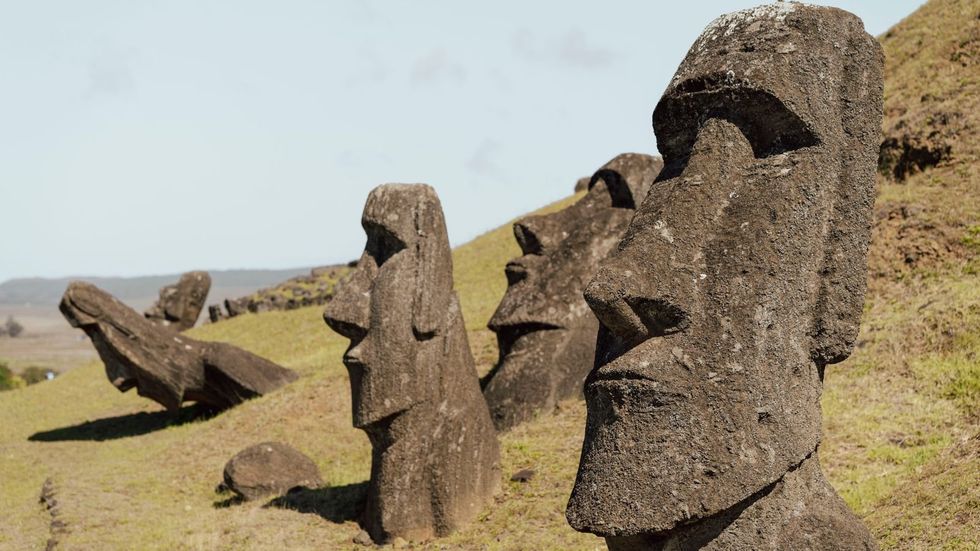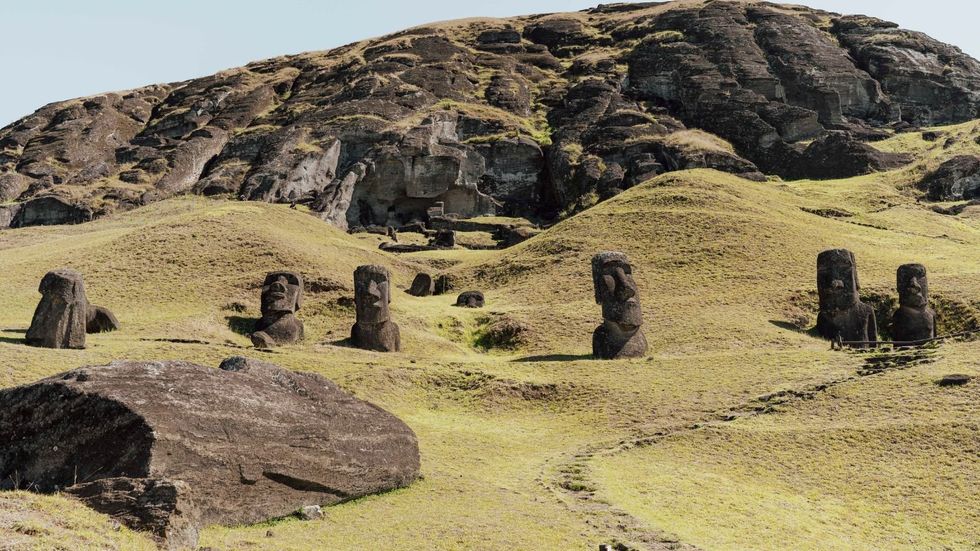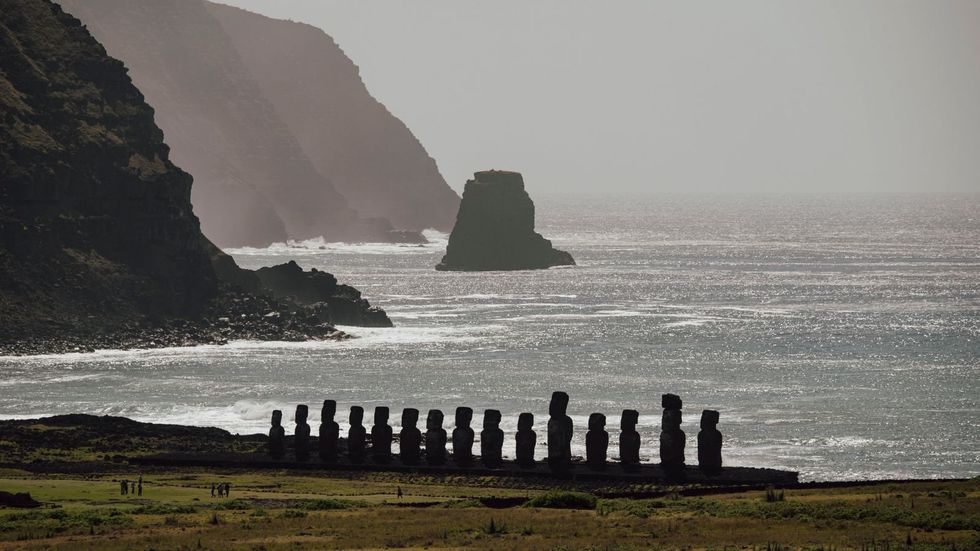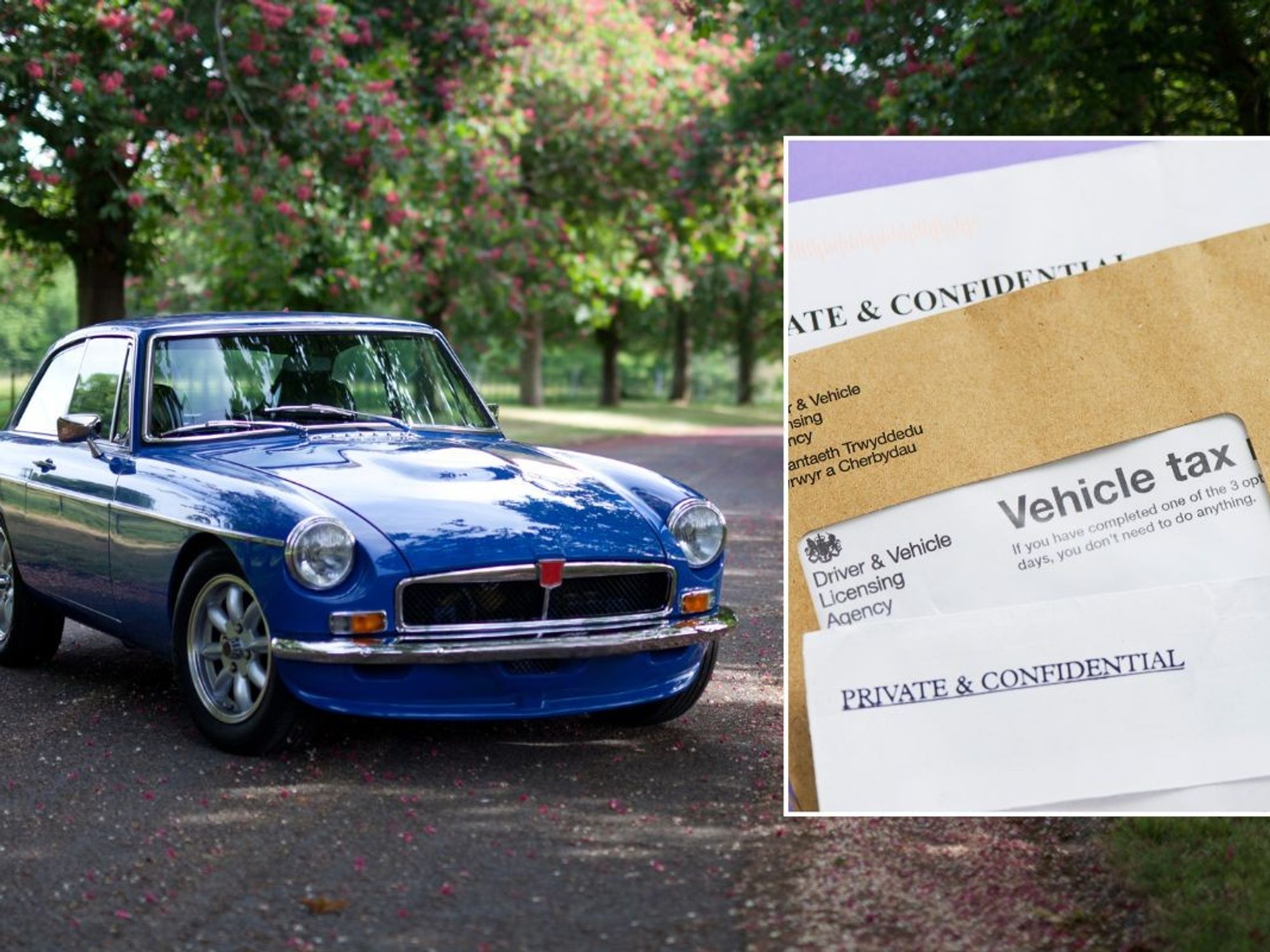Mystery of how Easter Island statues 'walked' across Rapa Nui is revealed in bombshell new study
Scientists had been baffled by the Moai's movements for centuries - but the answer might just have been found
Don't Miss
Most Read
Latest
The mystery of how the Easter Island statues "walked" across Rapa Nui has been revealed in a bombshell new study.
The monolithic human figures have caused global intrigue for years as scientists pondered over how they came to be.
It is understood they were carved from volcanic tuff between 1250 and 1500 AD and were designed in the likeness of the Rapa Nui people's ancestors to watch over the island.
Oral traditions from the island described the statues "walking" to their ceremonial platforms, known as ahu.
Now, new research has supported these oral traditions - and suggests that rather than being dragged or rolled into place, as previously thought, the statues were "walked" upright into their positions.
The study used physics, 3D modelling and field experiments to gather evidence of this potential method.
Published in the Journal of Archaeological Science and led by anthropologist Carl Lipo of Binghamton University and University of Arizona's Terry Hunt, the study analysed nearly 1,000 moai statues, including 62 found along ancient roads.
Researchers concluded the statues' unique shapes were in fact designed in order to enable movement.

A new study shows the statues 'walked' to their positions
|GETTY
The wide, D-shaped base and forward-leaning position shared by the road statues would have allowed them to be rocked from side to side, creating a walking motion.
To test their theory, scientists built a 4.35-tonne replica moai and found it took a team of 18 people 40 minutes to move the statues 100 metres.
Not only did the test prove the hypothesis was possible, it also found it to be efficient.
The technique also required minimal labour and no wooden rollers, rejecting the previous theory that the statues were rolled horizontally to their positions.
SCIENCE BREAKTHROUGHS - READ MORE:

The research supports evidence taken from Rapa Nui oral traditions
|GETTY
Scientists also analysed the spatial distribution of moai along the ancient roads of Rapa Nui.
Over half of the unfinished or broken statues were found within two kilometre of the Rano Raraku quarry.
This fits an exponential decay pattern consistent with mechanical transport failure rather than intentional placement.
Meanwhile, the roads themselves, which were usually 4.5 metres wide and concave in shape, seem to have been purpose-built in order to stabilise the statues as they were moved.

The statues, made in the likeness of the islanders' ancestors, were placed to watch over the island
|GETTY
The supports previous theories that the statues and roads were built in an interrelated system.
It is thought new sections of road would have been cleared by workers as a statue was moved.
Overlapping and parallel routes visible throughout the island support this idea.










